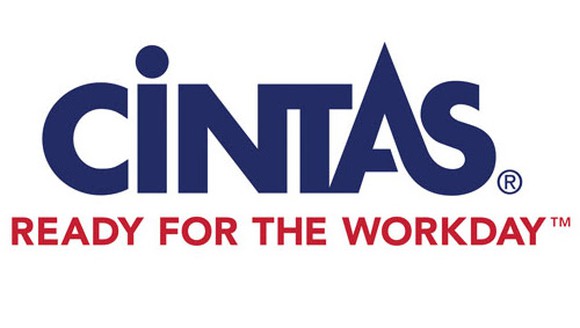Is your store facing a pet supply shortage? Few industries are immune from the supply chain disruptions that persist around the world, and pet supplies are no exception.
Between ingredient and component shortages (like aluminum for food cans), employee staffing, long lead times and price increases on processing equipment and transportation, the challenges that manufacturers are experiencing have put a strain on pet retailers, according to Pet Food Institute. Additionally, the increase in working from home during the pandemic led to record numbers of pet adoptions, creating increased demand for pet retail products.
“As retailers navigate the pet supply shortage as a result of the supply chain issues, it’s more important than ever for them to find ways to build loyal relationships with their customers and keep a variety of essential products on shelves.”
Vic Mason, president of World Pet Association (WPA)
Below are six ways pet retailers can stay ahead of the pet supply shortage:
1. Embrace the boutique approach
Present your merchandise as rotating to build an expectation with your customers that you always have something new and interesting to share — and that way they don’t expect the same products all the time. This can be easier with low-margin commodity items rather than high-end specialty items. While this is more difficult for certain necessities, you can keep interest high for customers through this approach.
“On items such as toys (dog, cat, bird, etc.) this is absolutely the way to go. That way your shelves don’t look empty. Assorted packaged treats would also fall into this category.”
Bill Trufant, WPA board member and president of B & B Pet Stop, Inc.
2. Expand warehouse capabilities and keep more items in stock
Get ahead of pet supply shortages by keeping more stock on hand of the products you know will sell. “Maybe keep a few more of the hotter selling items in stock than you normally would,” Trufant said. Where this may create challenges for storage room within the store, look to expanding your warehouse capabilities.
"We expanded our warehouse capability at the beginning of the year and it has helped us tremendously by being able to buy large quantities and maintaining consistent weeks of supply when possible.”
Carrie McDermott, CEO of Pet People
3. Diversify your product mix and carry alternatives
Anticipate how you can overcome pet supply shortages when, not if, they happen. Jim Castleberry, director of merchandising at Pet Food Express, elaborated on this: “Diversify your product mix with the belief that all suppliers will have a period of supply-chain hardship, but play the odds that each will be at different times. Be careful not to confuse diversifying ‘brands’ versus manufactures and pay close attention especially with canned products — you may find many manufactures all use the same co-packer so when one is out, they are all out. Distributor reps can be very good at letting you know which brands are made at what co-packer.”
Castleberry also suggested, “Carrying multiple sizes of a product will increase the odds we will have something to offer, and if that doesn’t work, switching to other flavors or more trustworthy brands might be the only solution to keep the customer in store.”
"Diversify your product mix with the belief that all suppliers will have a period of supply-chain hardship, but play the odds that each will be at different times."
Jim Castleberry, director of merchandising at Pet Food Express
When supply chains falter, being able to present yourself as an authority on pet products and offer alternatives may be the best solution. McDermott said, “We also try to encourage substitutions where possible by providing the customer options where they have the ability to switch and/or try something new.”
4. Diversify your distributor network
Be proactive in your communications with distributors to plan ahead for any delays, and have a back-up plan in place if your primary distributor doesn’t have stock.
McDermott suggested, “Open up distribution where possible and try for dual distribution on items. It helps when one distributor may be out of stock but another one has the product that the customer needs. This may not work in all geographies but has helped us in many markets.” This may require making sale and marketing plans based on what quantities are in stock on distributor websites, and having a back-up plan when you encounter a pet supply shortage.
“As soon as you know something is not coming from your usual source, get on another distributor’s website and hopefully get it there. You may pay a little more than you normally would, but it’s better than losing a sale and making a customer go somewhere else!”
Bill Trufant, WPA board member and president of B & B Pet Stop, Inc.
5. Shape consumer demand through marketing
If you have a lot of stock for a particular product, consider shaping store promotions around that item. Look for opportunities to create demand by making high-stock items more prominent in the store or adding signage.
“You can usually check the distributor’s website to find out just what these items with reasonable quantities on hand are — then make your sale and marketing plans accordingly.”
Bill Trufant, WPA board member and president of B & B Pet Stop, Inc.
6. Source local products and prioritize brands that rely on indie retailers
For the supply chain delays associated with shipping and trucking, look to products from distributors and vendors closer to your store. Do research to understand where materials are sourced and where products are manufactured, and use that information to determine what markets to target. Brands that are independently or family owned can be more consistent and reliable in terms of having items in stock and are great for marketing to your customer base.
Also, find ways to support and prioritize the brands that focus on independent retail exposure, and not just large chains.
“Avoid depending on products that also sell to larger retailers because many times when there is pressure on the supply chain, independents and their distributors are not getting the priority. Proactively switching to brands that rely on indie should be encouraged."
Jim Castleberry, director of merchandising at Pet Food Express
Whether supply chain issues persist from continued pandemic fallout or rising fuel costs, pet retailers should anticipate some disruption and take the steps needed to mitigate it.
Ultimately, pet retailers should strive to be flexible and resourceful when encountering pet supply shortages. Find ways to solve customers’ challenges to prevent them needing to shop elsewhere.
Subscribe to the WPA365 Newsletter
Savvy pet retailers can stay up to date on the latest content for pet professionals by signing up for the WPA365 monthly newsletter. Find advice, industry updates and more — curated for your needs. Complete the form below to subscribe!

 “As retailers navigate the pet supply shortage as a result of the supply chain issues, it’s more important than ever for them to find ways to build loyal relationships with their customers and keep a variety of essential products on shelves.”
“As retailers navigate the pet supply shortage as a result of the supply chain issues, it’s more important than ever for them to find ways to build loyal relationships with their customers and keep a variety of essential products on shelves.” “On items such as toys (dog, cat, bird, etc.) this is absolutely the way to go. That way your shelves don’t look empty. Assorted packaged treats would also fall into this category.”
“On items such as toys (dog, cat, bird, etc.) this is absolutely the way to go. That way your shelves don’t look empty. Assorted packaged treats would also fall into this category.” "We expanded our warehouse capability at the beginning of the year and it has helped us tremendously by being able to buy large quantities and maintaining consistent weeks of supply when possible.”
"We expanded our warehouse capability at the beginning of the year and it has helped us tremendously by being able to buy large quantities and maintaining consistent weeks of supply when possible.” "Diversify your product mix with the belief that all suppliers will have a period of supply-chain hardship, but play the odds that each will be at different times."
"Diversify your product mix with the belief that all suppliers will have a period of supply-chain hardship, but play the odds that each will be at different times."




















Facebook Comments